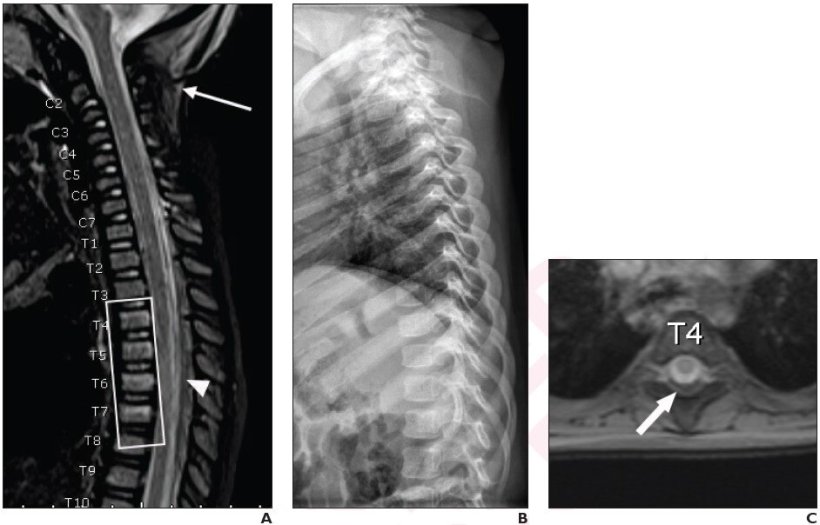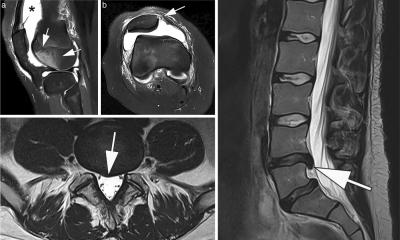
Credit: American Roentgen Ray Society (ARRS), American Journal of Roentgenology (AJR)
News • Trauma imaging
Suspected child abuse: Whole-spine MRI warranted
According to new research, whole-spine MRI commonly demonstrates isolated thoracolumbar injuries in children with suspected abusive head trauma.
"When performing spine MRI in children with suspected abusive head trauma, whole-spine MRI rather than cervical spine MRI may be warranted, to avoid missing isolated thoracolumbar injuries," clarified first author Boaz Karmazyn from Indiana University School of Medicine, Riley Hospital for Children.
Karmazyn and team's retrospective study included 256 children (170 boys, 86 girls; mean age, 5.9 months), who from January 2019 to December 2020, underwent skeletal survey and head MRI for suspected child abuse. Children with suspected abusive head trauma also underwent whole-spine MRI, per institutional protocol. Diagnoses for abusive head trauma were established via clinical record review, as well as injuries described in skeletal survey, head MRI, and head CT (if performed) reports.
Of the 148 total children with suspected abusive head trauma who underwent whole-spine MRI, 23.0% of examinations demonstrated injuries localized to the thoracolumbar spine. Injuries were localized to the thoracolumbar spine in 51.1% of examinations with major findings: Subdural hematoma, epidural hematoma, ligamentous injury, or fracture not identified by skeletal survey.
"This study represents the largest reported series to our knowledge of children with suspected abusive head trauma who were evaluated by whole-spine MRI," added the authors of the article in ARRS' American Journal of Roentgenology
Source: American Roentgen Ray Society
18.01.2022










